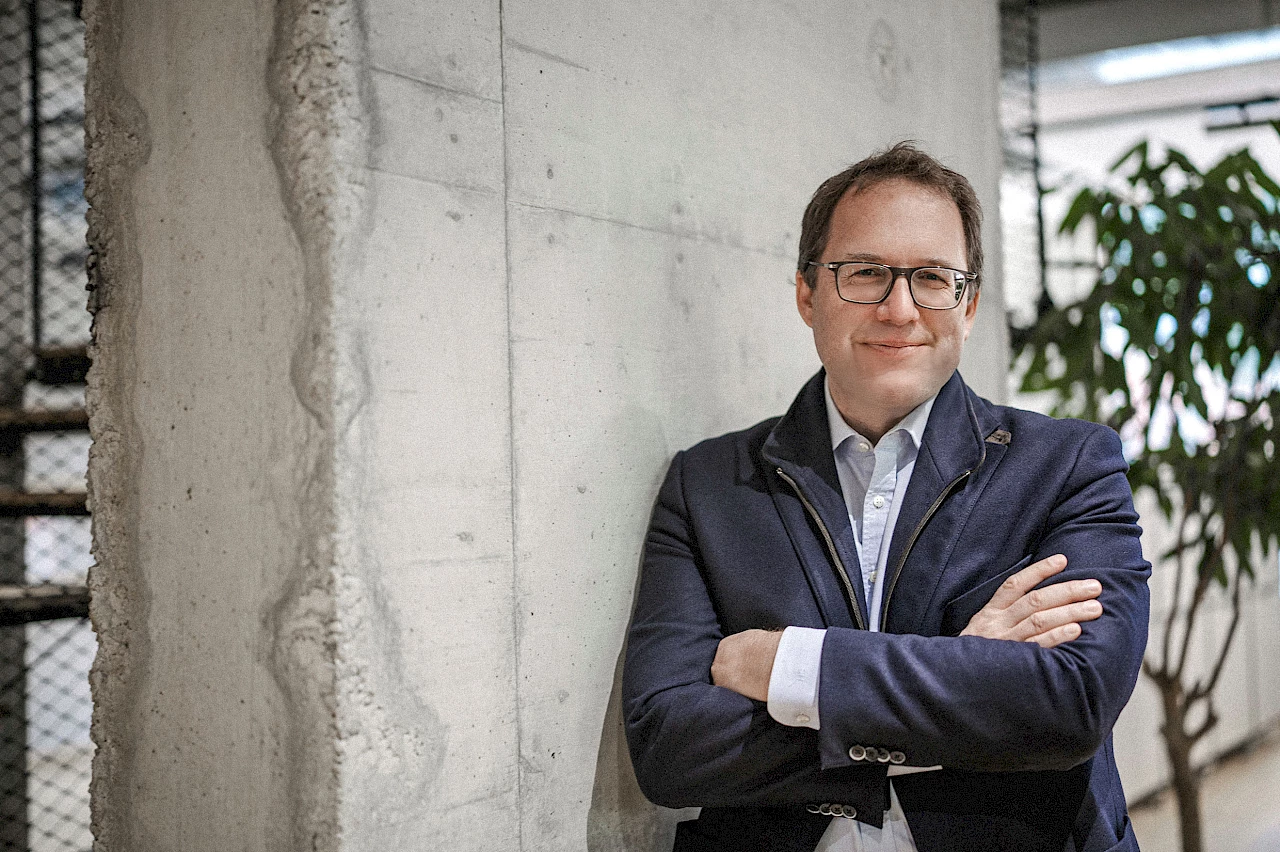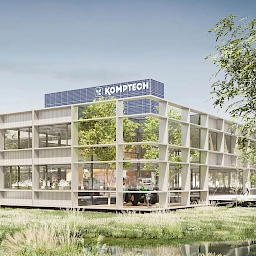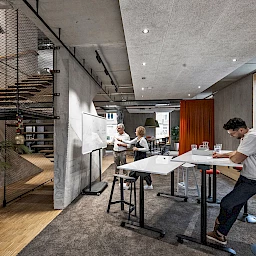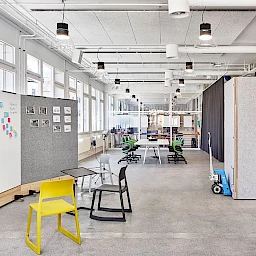Sebastian Hölzlein, co-founder and Managing Director of Alpha IC, has implemented an ambitious pilot project with RESI. In the following interview, he talks about his vision, modern work spaces, corporate culture and why low-tech is a key component of sustainable and forward-looking construction approaches.
Mr Hölzlein, what was the original idea behind RESI?
RESI stands for Responsibility, Excellence, Sustainability and Innovation. These four concepts reflect what we wanted to achieve with the project, namely a building that is sustainable in an ecological, functional and social sense. We also wanted to show that a modern and sustainable office building can also be created with a reduced level of technical complexity—in other words with a low-tech strategy. For us, RESI is a pilot project that brings together different approaches involving everything from the circular economy to a new type of work environment.
How are the values for which RESI stands reflected in the project?
RESI’s values are part of all the decisions we made and continue to make. For us, responsibility means assuming responsibility for the entire building life cycle by utilising recyclable materials, for example, or by obtaining a Building Resource Passport. Excellence means quality and clarity in design—from the building architecture to the workstations within. Sustainability is the key. The goal of a net zero energy balance is only one example. Innovation is reflected in the courage to do things differently—for example with the low-tech approach or the consistently user-focused design of the work environment and the flexible, trust-based work concept.
Your building does not use conventional heating or cooling technology. How does that work?
That’s the core aspect of the low-tech strategy. We work with high-thermal-mass materials, recycled concrete and intelligent air circulation systems. During the night, warm air is conveyed out of the building, which cools the building down naturally. In the winter, a small electric heating coil is used as a back-up to deal with any peak loads that may occur. Initial feedback has shown that we are able to maintain stable room temperatures of 25 °C to 26 °C even on hot summer days without any active cooling.
RESI has a net-zero energy balance. How was that accomplished?
By means of the large-scale photovoltaic system on the roof. This enables us to produce more energy each year on average than we actually use ourselves. The surplus energy is fed into the power grid, and any short-term deficits are compensated for with our own battery storage unit. We wanted to construct a building that makes sense both ecologically and economically. Thanks to the low building operation costs, we can offer tenants long-term planning security, which gives them a real advantage—especially in times of rising energy prices.
Your choices for materials were also made with sustainability in mind. Could you explain what you did in more detail?
We consistently made use of recycled materials and materials that could be reused or re-purposed. One example involves the brick slips on the façade that lend the building a timeless appearance, but which also have a past of their own. In addition, our Building Resource Passport documents all of the materials in order to enable their reuse at the end of their life cycles. This holistic approach led the German Sustainable Building Council to award us 100 out of a possible 100 points in a life cycle assessment study.
Was this approach associated with any special challenges?
Oh yes, especially in the early stages. The biggest obstacle involved getting rid of old ways of thinking—both among our own people and at our partners. An office without a heating system? Many people couldn’t imagine something like that in the beginning. The idea of working with recycled material also led to completely new challenges because we needed to convince our suppliers to adapt their production processes accordingly. Still, it was precisely these challenges and conflicts that made the importance of the project so clear to us and strengthened our belief that we were on the right track.
The corporate culture at Alpha IC was also an important aspect for the project. How are the company’s values reflected in the building?
We wanted the people who were going to be working in RESI to view it as their new home. That’s why we got them involved from the very beginning—with workshops, feedback sessions and joint planning activities. This didn’t just involve how workstations were to be arranged and assigned, as we also addressed concepts such as activity-based working. Today, we have a modern work environment in place that includes open zones, retreat areas, creative workshop spaces and conference rooms. Each person can freely choose where and how they would like to work and book a workstation or workspace accordingly.
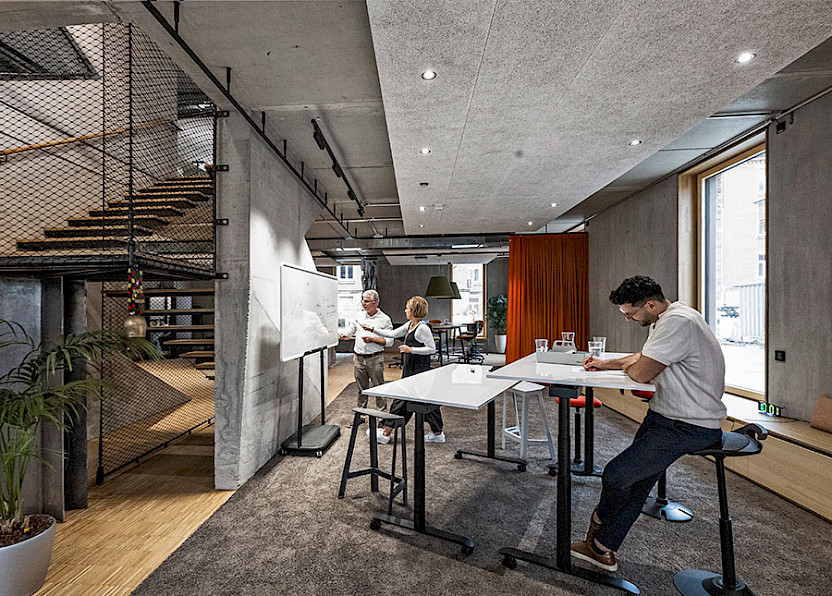
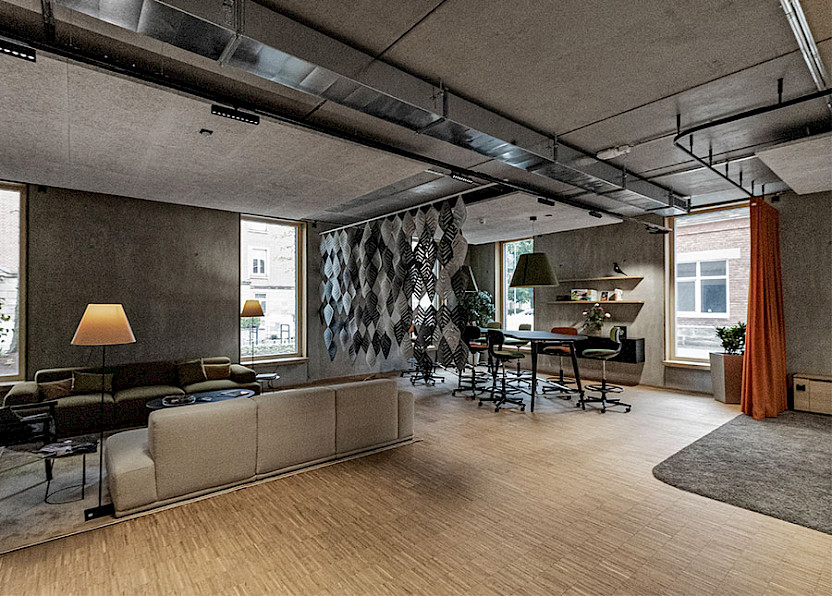
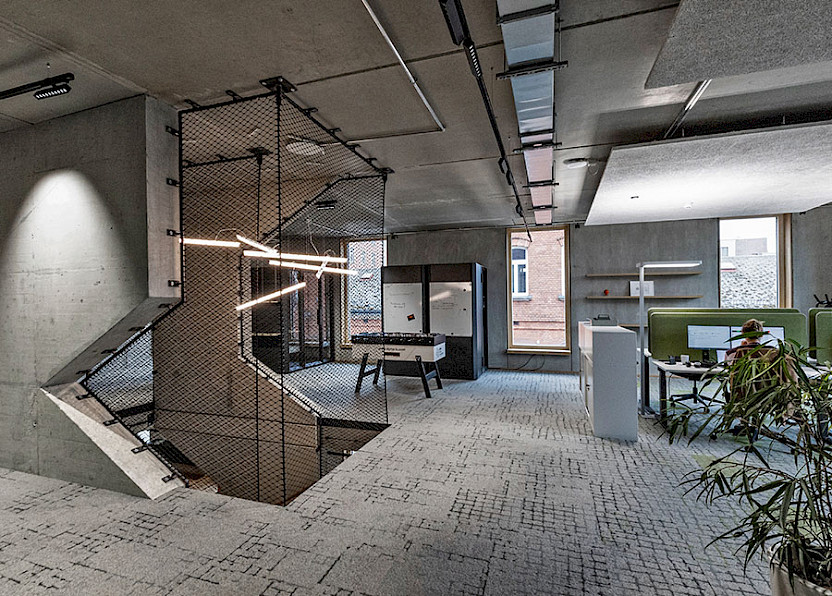
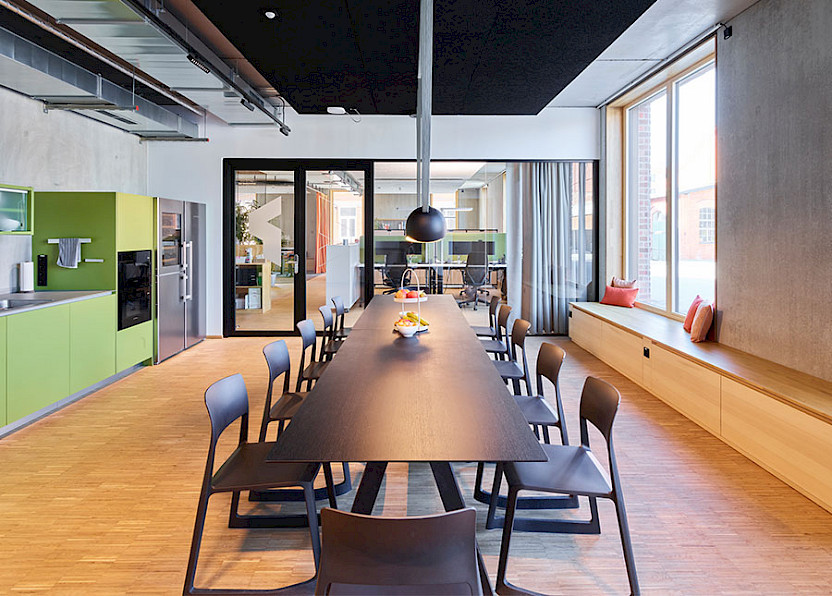
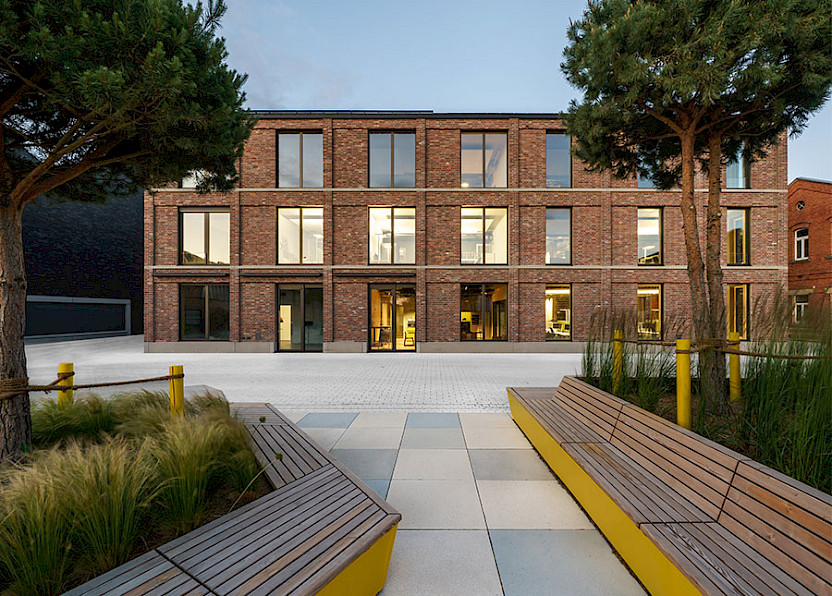
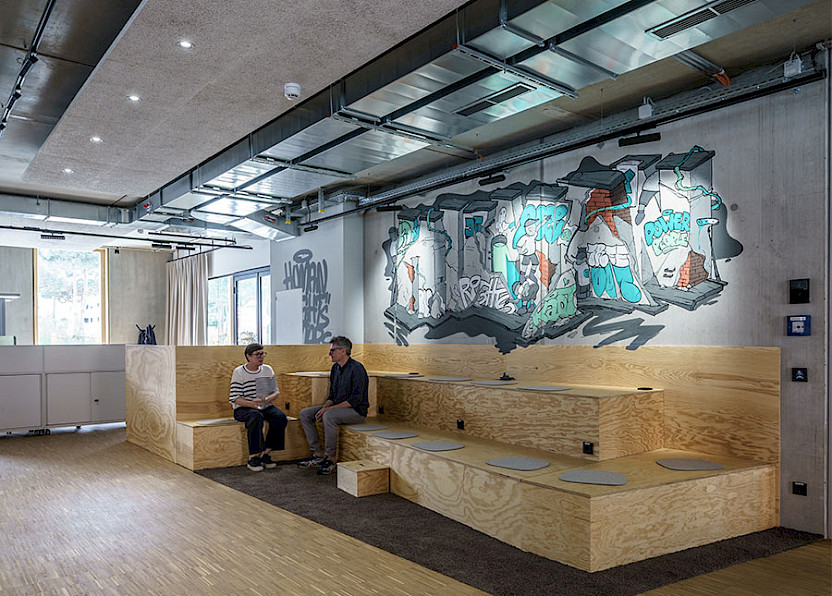
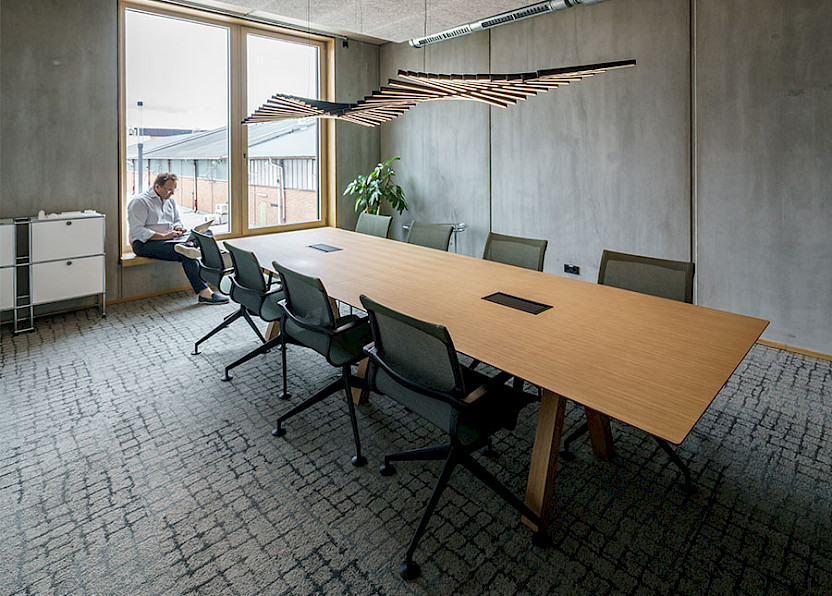
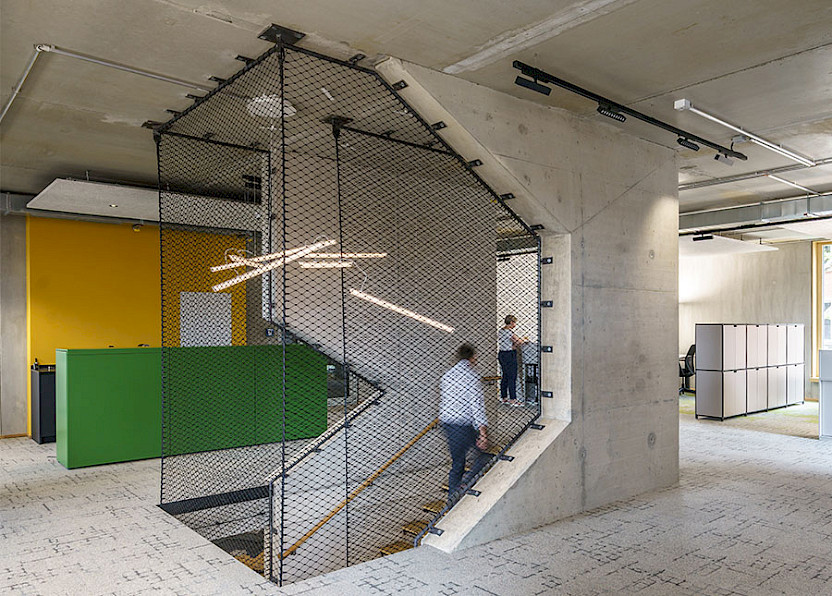

You rely completely on trust rather than an attendance requirement. How does that work in practice?
We have no rules regarding how often one has to be in the office. Working and office hours are completely based on trust. It’s interesting to note that with this system, people very much like to come to work and tend to come to work more often because they feel good in the office and enjoy seeing and taking to each other. This shows that values-based leadership that focuses on individual responsibility and mutual regard and respect is more sustainable than a system of rigid rules.
What does this mean in terms of the role offices should play in the normal working day?
The office is no longer simply just a place of work but instead also a place of interaction and collaboration. We wanted to create an environment that promotes teamwork and at the same time makes it possible for every employee to pursue their own individual approach for conducting their work. RESI is designed to be both flexible and inspiring—a place where people are happy to come and spend time together.
RESI is not only your company’s headquarters but also a building that’s open to the public. Why was that important to you?
We view RESI as part of the city and its society. There’s a café on the ground floor that anyone can visit, and external companies can also rent space in the building. In addition, we plan to use the space in front of the building for cultural and community events. This actually goes together well with the idea of the Lagarde cultural quarter, which combines historical buildings with new projects and start-ups.
What makes the Lagarde Campus location so special?
Platz der Menschenrechte 1 is not just an address; it’s also a statement. Here, at an address whose name references universal human rights, a cultural quarter is being established that combines work, interaction and encounters, and city life. Our café that’s open to the public, the event space and the open design are all a part of this vision. We don’t simply want to operate an office building; we want to create a location that impacts the surrounding area in a positive way.
What role does your interaction and communication with start-ups and tech companies play in this context?
Innovation is everywhere in this environment and we want to contribute to that as well. Our dialogue with young companies generates new momentum in terms of both how we work and our use of sustainable technologies. RESI is a place where such exchanges occur—a type of platform that brings together different companies and stakeholders.
The “Human Rights Square” graffiti in the entrance area definitely stands out. What’s the background to this?
The graffiti refers to the building’s location at what literally translates into Human Rights Square in English. It’s a visual statement that makes values visible—without any moralising undertones. For us, it’s a symbol which shows that responsibility and clear positioning are part of our work.
What did you learn the most from RESI?
That radical simplicity is often the best way to go. We learned how important it is to reduce complexity, whether in terms of technology or during the construction process. We also learned that transparency is the key: we disclosed all of our costs in order to demonstrate that sustainable construction does not necessarily have to mean more expensive construction.
RESI is considered a model for future projects. What can other companies looking to construct buildings learn from your project?
To be courageous. One doesn’t have to do everything in exactly the same way we did, but RESI does show that medium-sized companies can also achieve ambitious climate targets if they adopt a consistent approach.
Do you yourself see RESI as a model for other projects?
I believe that RESI can encourage others to adopt new ideas and approaches. RESI shows that low-tech and circular economy principles can also work in modern office buildings and are affordable as well. Of course, the question remains as to how such concepts could be implemented in other climate zones or with larger structures and facilities. We’re learning new things in this regard every day, and we see RESI as an experiment that should be allowed to grow and develop further.
What are your opinions about the future of construction?
I believe we will see more low-tech buildings that are more robust and simpler. Digitalization and AI can complement and supplement this process, but not replace it. We need to design buildings that will also continue to function properly in 50 years without their technical systems becoming outdated. For me, sustainability means longevity in terms of both materials and concepts.
Do you think low-tech will become the new high-tech?
That description may be a bit extreme, but I believe we will have to change the way we think. Instead of installing more and more technical systems, we should be focusing more on the intelligence of architecture, on materiality and on user behaviour. Low-tech is not a step backward here but rather a different way to achieve a greater degree of sustainability and efficiency.
Mr Hölzlein, thank you very much for giving us this interview.



